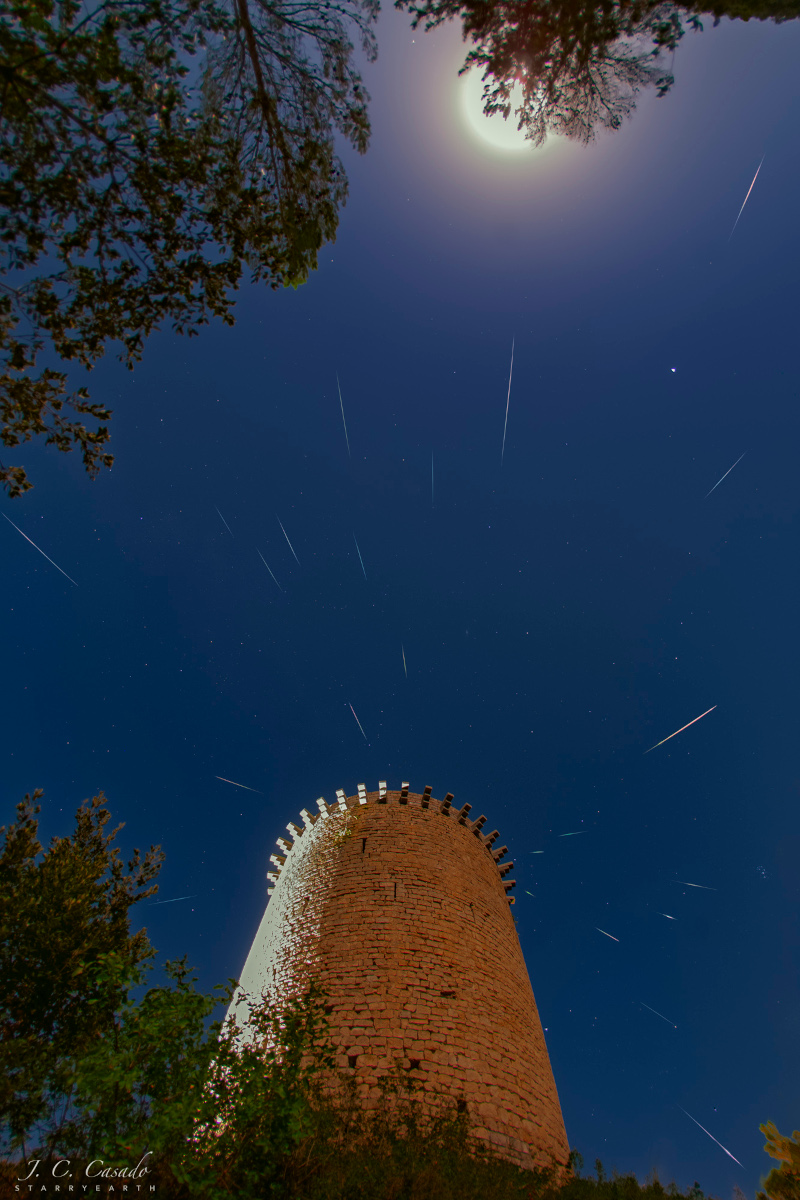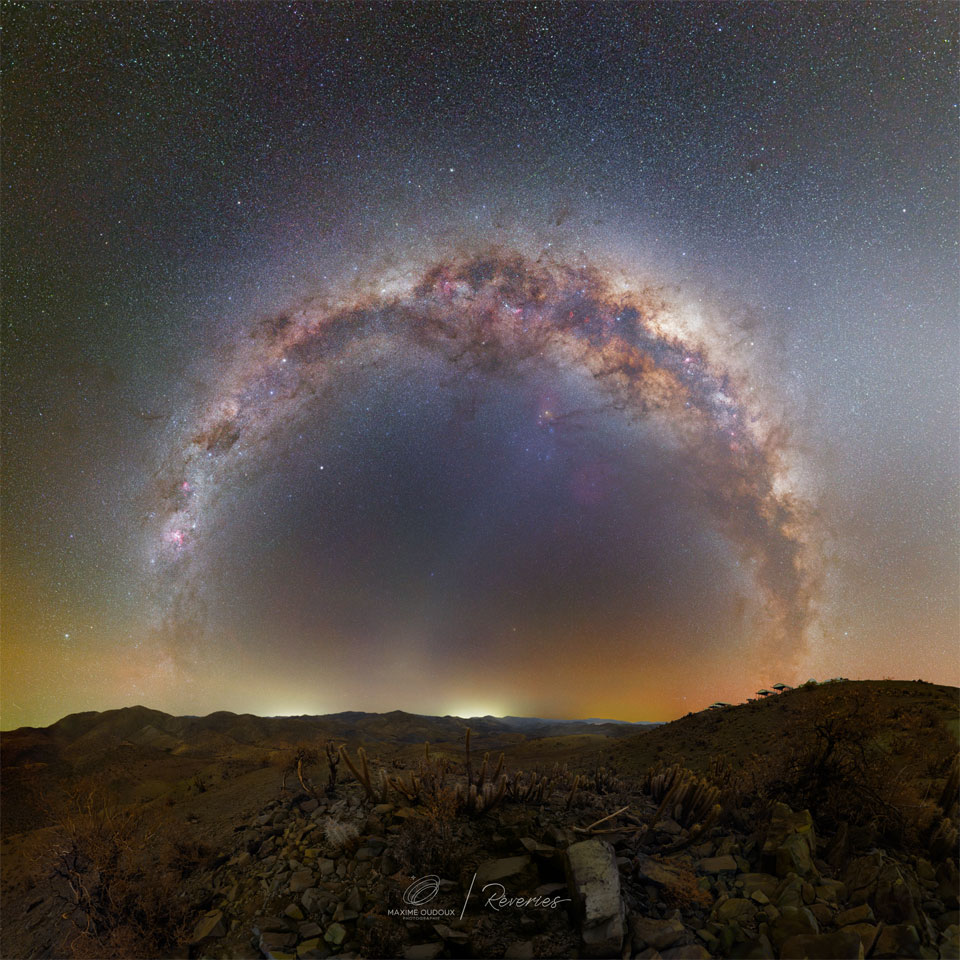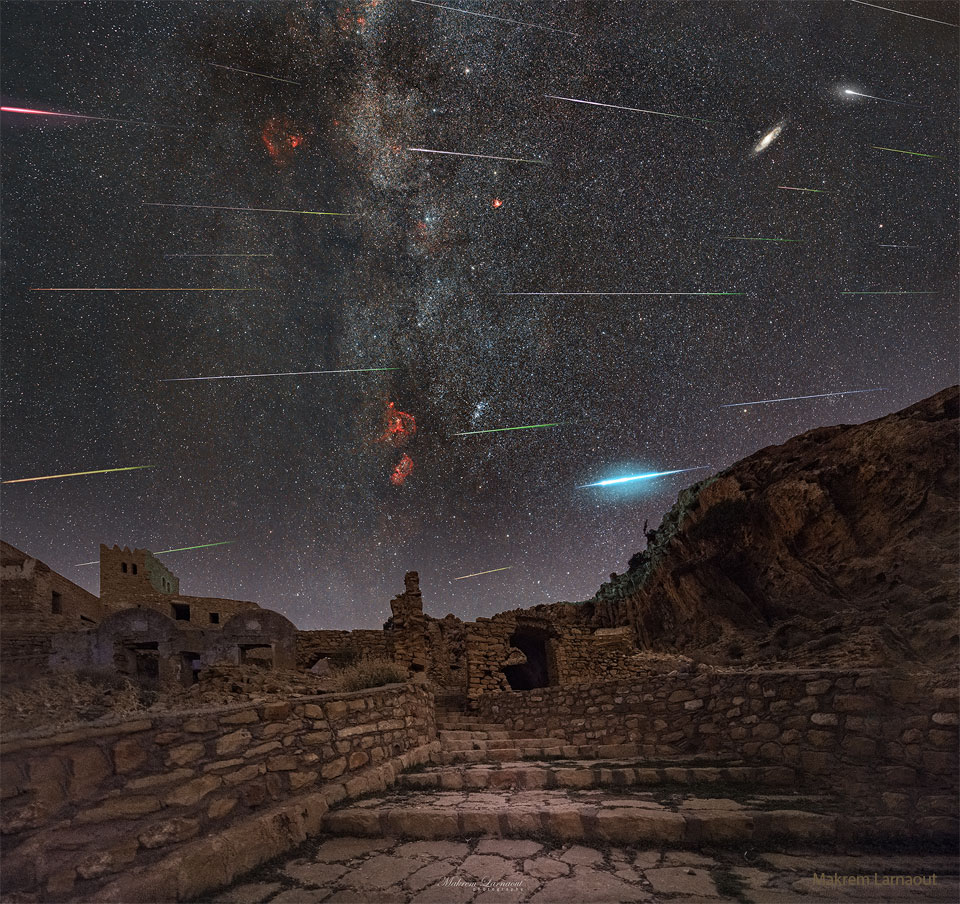안녕하세요, 잡학다식 입니다. 오늘은 과연 나사에서 어떤 방식으로 우주의 형상을 표현해 줄까요?
우선 이미지부터 볼 수 있도록 하겠습니다

해당 사진의 이름은 Full Moon Perseids 인데요 우선 NASA에서 공식적으로 발표한 설명들을 확인해 보겠습니다
The annual Perseid meteor shower was near its peak on August 13. As planet Earth crossed through streams of debris left by periodic Comet Swift-Tuttle meteors rained in northern summer night skies. But even that night's nearly Full Moon shining near the top of this composited view couldn't hide all of the popular shower's meteor streaks. The image captures some of the brightest perseid meteors in many short exposures recorded over more than two hours before the dawn. It places the shower's radiant in the heroic constellation of Perseus just behind a well-lit medieval tower in the village of Sant Llorenc de la Muga, Girona, Spain. Observed in medieval times, the Perseid meteor shower is also known in Catholic tradition as the Tears of St. Lawrence, and festivities are celebrated close to the annual peak of the meteor shower. Joining the Full Moon opposite the Sun, bright planet Saturn also shines in the frame at the upper right.
이번에도 광활한 우주 앞에 인간이 얼마나 작은 존재인지 다시 한번 알게 되는것 같습니다
저는 내일도 더 좋은 사진과 함께 돌아오겠습니다, 그럼 행목한 하루 되시길 바랍니다
'과학상식' 카테고리의 다른 글
| NASA 나사의 오늘의 이미지들 (2022-08-20) (0) | 2022.08.21 |
|---|---|
| NASA 나사의 오늘의 이미지들 (2022-08-19) (0) | 2022.08.20 |
| NASA 나사의 오늘의 이미지들 (2022-08-17) (0) | 2022.08.18 |
| NASA 나사의 오늘의 이미지들 (2022-08-16) (0) | 2022.08.17 |
| NASA 나사의 오늘의 이미지들 (2022-08-15) (0) | 2022.08.16 |

